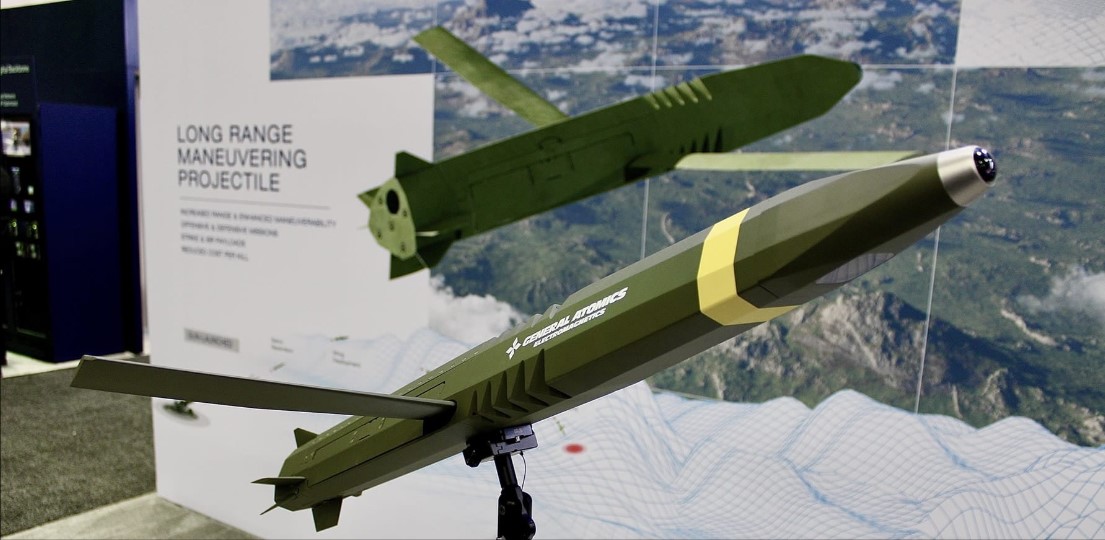General Atomics Refines Long-Range Maneuvering Projectile for Precision Strikes Beyond 120 Kilometers

General Atomics, known for its advanced unmanned aerial vehicles like the MQ-9 Reaper and MQ-1C Grey Eagle, is now turning its expertise to a new arena: precision artillery. The company has spent the last three years developing the Long-Range Maneuvering Projectile (LRMP), a highly sophisticated artillery round capable of reaching distances over 120 kilometers. What sets this projectile apart is its unique ability to strike moving targets in GPS-denied environments, making it a game-changer in modern warfare.
The LRMP project is entirely self-funded by General Atomics, a decision driven by the urgent need for enhanced battlefield capabilities. Scott Forney, President of General Atomics Electromagnetic Systems, emphasized that the company is pushing to bring this technology to warfighters as quickly as possible, citing lessons learned from the Russia-Ukraine conflict, where the demand for longer-range precision weaponry has become critical.
Key Features of the LRMP
Unlike traditional artillery rounds, the LRMP is designed with wings that deploy mid-flight, allowing it to glide and maneuver toward its target. The wings, which are encased in a sabot that discards upon firing, are essential for extending the projectile's range. The LRMP reaches an apogee of 40,000 to 45,000 feet before deploying its wings, after which it can perform complex maneuvers, including "endgame" maneuvers during the final approach to its target. This gives it a significant edge in hitting moving or evasive targets.
What’s particularly innovative is the projectile's shape. The LRMP is not a traditional round shape; instead, it resembles a "rouleaux triangle." This aerodynamic form provides greater lift and control, which is key to achieving the impressive 120-kilometer range.
A Self-Funded Race Against Time
General Atomics’ decision to self-fund the LRMP is unusual but highlights their commitment to speeding up development. Forney explained that they are using profits to push the project forward, with the goal of having it ready for use as quickly as possible. “We’re limited by humans, nothing else right now,” he said, pointing to the company’s drive to produce an artillery round that can meet the demands of future conflicts.
The LRMP leverages General Atomics' work in other cutting-edge fields, such as hypersonics, railgun technology, and unmanned systems. The company applied lessons from its work on drones to ensure the LRMP is lightweight and maneuverable without making the system overly complex. The sensors and electronics inside the projectile are designed to endure the extreme forces experienced during hypersonic and railgun launches.
Guidance and Payload Innovation
One of the standout features of the LRMP is its advanced guidance system, which doesn’t rely on traditional GPS. In a battlefield where GPS can be jammed or denied, General Atomics is developing an alternative guidance system using machine learning and onboard cameras. The LRMP is equipped with multiple camera systems—one forward-facing and one downward-facing—allowing it to visually track its target. These innovations are drawn from the company's work on the "Vintage Racer" program, which also utilized a loitering system capable of surveillance and target tracking.
Though the LRMP is compact, its kinetic impact is expected to be equivalent to that of a 120mm shell, a substantial payload for its size. In addition to the kinetic payload, the modular design of the LRMP allows for the inclusion of Intelligence, Surveillance, and Reconnaissance (ISR) systems. This capability is being adapted from General Atomics’ work on space tracking systems, further enhancing the versatility of the round.
Production and Future Prospects
General Atomics is already preparing for the next phase of testing, producing dozens of LRMP rounds for evaluation. The company hopes to enter low-rate initial production by the end of 2025, a target they are determined to meet despite the complexities of scaling production. General Atomics is currently expanding its production capabilities, with plans to increase output to meet both U.S. military and international demand. Forney mentioned that the company is eyeing a production goal of up to 100,000 rounds per month, a testament to the potential scale of this system.
The LRMP is currently being developed for the U.S. Army and Marine Corps, with plans to adapt it for the Navy’s 127mm guns as well. While the naval version is expected to have a slightly shorter range of around 75 kilometers, the company remains focused on delivering the land-based variant first, which promises to provide unparalleled standoff capability to ground forces.
General Atomics’ Long-Range Maneuvering Projectile is shaping up to be a revolutionary piece of artillery technology. With its ability to hit moving targets at long distances in GPS-denied environments, it promises to provide a significant tactical advantage in modern warfare. The combination of advanced guidance systems, modular payload options, and extraordinary range makes LRMP a key player in future conflicts. As General Atomics continues to refine this groundbreaking system, the world watches with anticipation for its eventual deployment on the battlefield.


